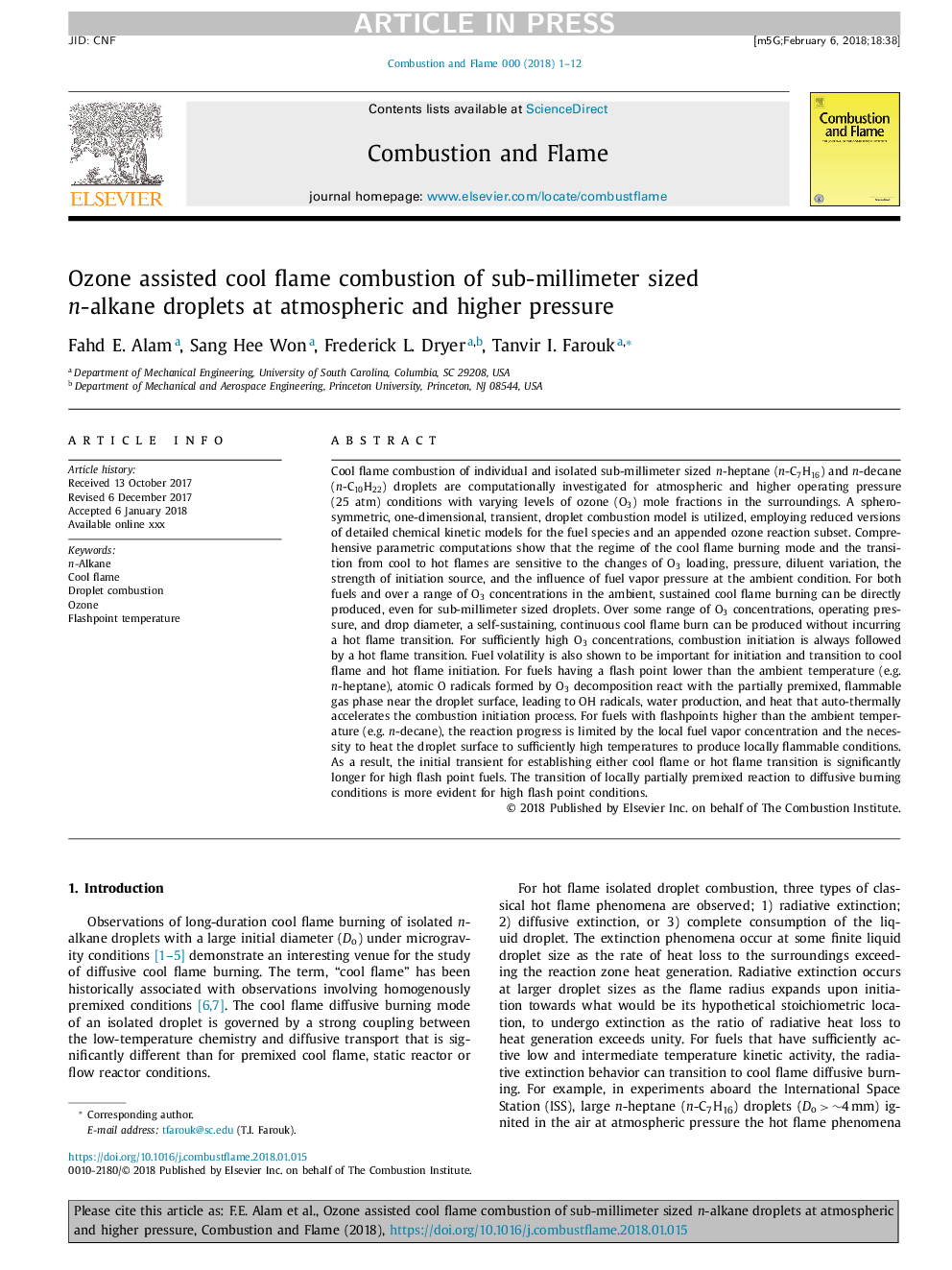| کد مقاله | کد نشریه | سال انتشار | مقاله انگلیسی | نسخه تمام متن |
|---|---|---|---|---|
| 6593429 | 1423542 | 2018 | 12 صفحه PDF | دانلود رایگان |
عنوان انگلیسی مقاله ISI
Ozone assisted cool flame combustion of sub-millimeter sized n-alkane droplets at atmospheric and higher pressure
دانلود مقاله + سفارش ترجمه
دانلود مقاله ISI انگلیسی
رایگان برای ایرانیان
موضوعات مرتبط
مهندسی و علوم پایه
مهندسی شیمی
مهندسی شیمی (عمومی)
پیش نمایش صفحه اول مقاله

چکیده انگلیسی
Cool flame combustion of individual and isolated sub-millimeter sized n-heptane (n-C7H16) and n-decane (n-C10H22) droplets are computationally investigated for atmospheric and higher operating pressure (25Â atm) conditions with varying levels of ozone (O3) mole fractions in the surroundings. A sphero-symmetric, one-dimensional, transient, droplet combustion model is utilized, employing reduced versions of detailed chemical kinetic models for the fuel species and an appended ozone reaction subset. Comprehensive parametric computations show that the regime of the cool flame burning mode and the transition from cool to hot flames are sensitive to the changes of O3 loading, pressure, diluent variation, the strength of initiation source, and the influence of fuel vapor pressure at the ambient condition. For both fuels and over a range of O3 concentrations in the ambient, sustained cool flame burning can be directly produced, even for sub-millimeter sized droplets. Over some range of O3 concentrations, operating pressure, and drop diameter, a self-sustaining, continuous cool flame burn can be produced without incurring a hot flame transition. For sufficiently high O3 concentrations, combustion initiation is always followed by a hot flame transition. Fuel volatility is also shown to be important for initiation and transition to cool flame and hot flame initiation. For fuels having a flash point lower than the ambient temperature (e.g. n-heptane), atomic O radicals formed by O3 decomposition react with the partially premixed, flammable gas phase near the droplet surface, leading to OH radicals, water production, and heat that auto-thermally accelerates the combustion initiation process. For fuels with flashpoints higher than the ambient temperature (e.g. n-decane), the reaction progress is limited by the local fuel vapor concentration and the necessity to heat the droplet surface to sufficiently high temperatures to produce locally flammable conditions. As a result, the initial transient for establishing either cool flame or hot flame transition is significantly longer for high flash point fuels. The transition of locally partially premixed reaction to diffusive burning conditions is more evident for high flash point conditions.
ناشر
Database: Elsevier - ScienceDirect (ساینس دایرکت)
Journal: Combustion and Flame - Volume 195, September 2018, Pages 220-231
Journal: Combustion and Flame - Volume 195, September 2018, Pages 220-231
نویسندگان
Fahd E. Alam, Sang Hee Won, Frederick L. Dryer, Tanvir I. Farouk,